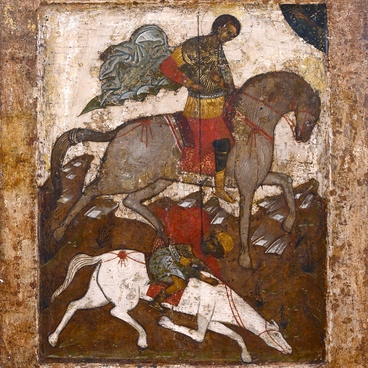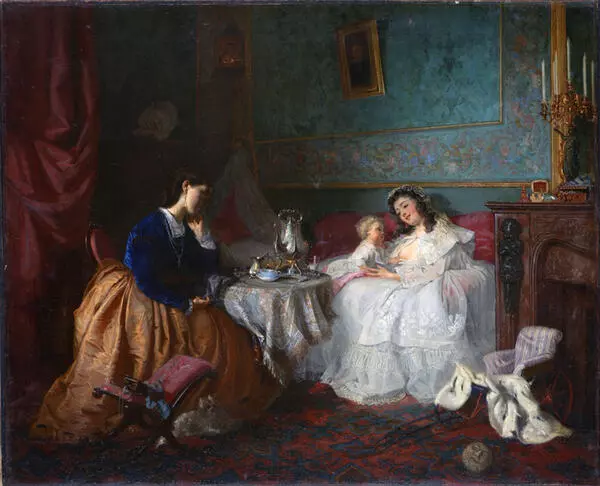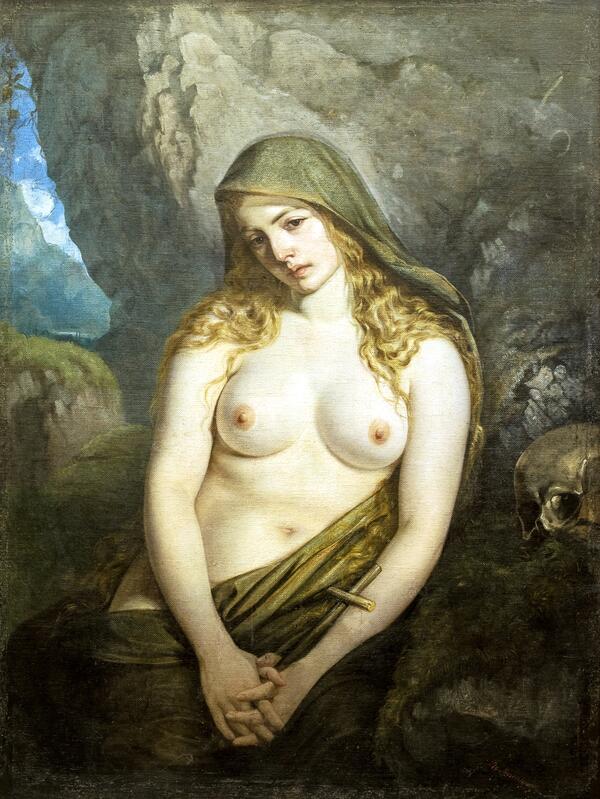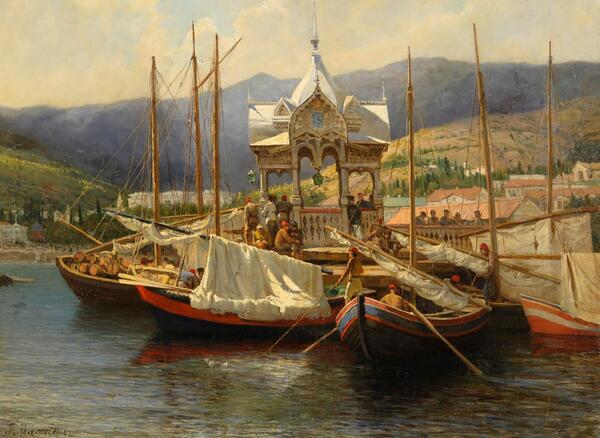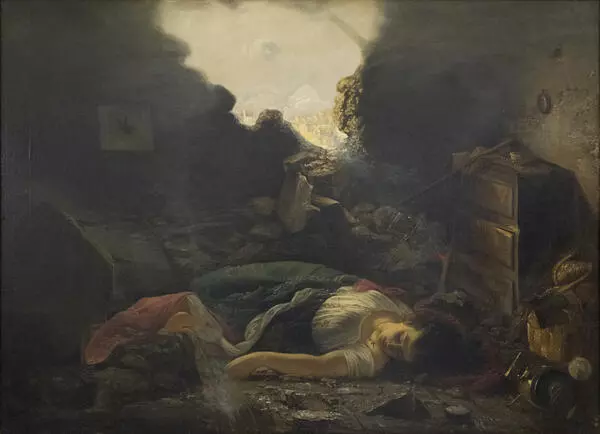GrigOriy MyasoyEdov (1834–1911) was one of the founders and active members of the Association of Traveling Art Exhibitions, a group of Russian artists who were the first to have the audacity to reject the rules and canons imposed by the Academy of Arts and turned to the surrounding reality. They stood in opposition to academic art and promoted the idea of renewing artistic language. Thanks to Myasoyedov and his fellow artists, Russian painting finally turned to mundane scenes and folk characters.
Unlike Myasoyedov’s later genre artworks, “The Flight of GrigOry OtrEpyev from the Inn on the Lithuanian Border” is based on historical events. But it helps follow how visual arts were changing in the second half of the 19th century.
The young artist drew inspiration from Boris GodunOv, a play by Alexander PUshkin also dedicated to the watershed events in Russian history. For this painting, the Academy of Arts awarded Myasoyedov a gold medal. Novosibirsk State Art Museum keeps a replica of this famous painting, which was created in 1862 to commemorate the 250th anniversary of the expulsion of the Polish-Lithuanian invaders from Russia.
In this work, we can see the master’s intention to combine historical motifs with visual features more typical of the genre painting.
Vladimir Stasov, a famous art critic, said that Myasoyedov had a ''profound understanding of the Russian national nature.’ The artist depicts a scene when impostor Grigory Otrepyev stops by the inn at the border. He eats and drinks at the same table with monk Misail and outcast raskolnik (a religious dissenter) Father Barlaam. Suddenly, the bailiffs, sent by Boris Godunov, step into the inn. Otrepyev reads the Tsar’s decree and twists it, describing the appearance of Father Barlaam, so he is mistaken for thief Grigory. But the monk rips out the paper and reads the real description of Otrepyev. At that moment, Grigory stands with his hand in his waistcoat.
At this stage of his creative work, the artist created the painting’s composition in line with academic traditions. Expressive movements of characters enhance the impression of some theatricality of the scene. That said, Myasoyedov took a keen interest in the distinctive types of ordinary people and the everyday details of the inn’s interior. Subsequently, the artist would develop these traits and become known for his talent and inquisitive, critical mindset.
Unlike Myasoyedov’s later genre artworks, “The Flight of GrigOry OtrEpyev from the Inn on the Lithuanian Border” is based on historical events. But it helps follow how visual arts were changing in the second half of the 19th century.
The young artist drew inspiration from Boris GodunOv, a play by Alexander PUshkin also dedicated to the watershed events in Russian history. For this painting, the Academy of Arts awarded Myasoyedov a gold medal. Novosibirsk State Art Museum keeps a replica of this famous painting, which was created in 1862 to commemorate the 250th anniversary of the expulsion of the Polish-Lithuanian invaders from Russia.
In this work, we can see the master’s intention to combine historical motifs with visual features more typical of the genre painting.
Vladimir Stasov, a famous art critic, said that Myasoyedov had a ''profound understanding of the Russian national nature.’ The artist depicts a scene when impostor Grigory Otrepyev stops by the inn at the border. He eats and drinks at the same table with monk Misail and outcast raskolnik (a religious dissenter) Father Barlaam. Suddenly, the bailiffs, sent by Boris Godunov, step into the inn. Otrepyev reads the Tsar’s decree and twists it, describing the appearance of Father Barlaam, so he is mistaken for thief Grigory. But the monk rips out the paper and reads the real description of Otrepyev. At that moment, Grigory stands with his hand in his waistcoat.
At this stage of his creative work, the artist created the painting’s composition in line with academic traditions. Expressive movements of characters enhance the impression of some theatricality of the scene. That said, Myasoyedov took a keen interest in the distinctive types of ordinary people and the everyday details of the inn’s interior. Subsequently, the artist would develop these traits and become known for his talent and inquisitive, critical mindset.
